-
 Bitcoin
Bitcoin $106,754.6083
1.33% -
 Ethereum
Ethereum $2,625.8249
3.80% -
 Tether USDt
Tether USDt $1.0001
-0.03% -
 XRP
XRP $2.1891
1.67% -
 BNB
BNB $654.5220
0.66% -
 Solana
Solana $156.9428
7.28% -
 USDC
USDC $0.9998
0.00% -
 Dogecoin
Dogecoin $0.1780
1.14% -
 TRON
TRON $0.2706
-0.16% -
 Cardano
Cardano $0.6470
2.77% -
 Hyperliquid
Hyperliquid $44.6467
10.24% -
 Sui
Sui $3.1128
3.86% -
 Bitcoin Cash
Bitcoin Cash $455.7646
3.00% -
 Chainlink
Chainlink $13.6858
4.08% -
 UNUS SED LEO
UNUS SED LEO $9.2682
0.21% -
 Avalanche
Avalanche $19.7433
3.79% -
 Stellar
Stellar $0.2616
1.64% -
 Toncoin
Toncoin $3.0222
2.19% -
 Shiba Inu
Shiba Inu $0.0...01220
1.49% -
 Hedera
Hedera $0.1580
2.75% -
 Litecoin
Litecoin $87.4964
2.29% -
 Polkadot
Polkadot $3.8958
3.05% -
 Ethena USDe
Ethena USDe $1.0000
-0.04% -
 Monero
Monero $317.2263
0.26% -
 Bitget Token
Bitget Token $4.5985
1.68% -
 Dai
Dai $0.9999
0.00% -
 Pepe
Pepe $0.0...01140
2.44% -
 Uniswap
Uniswap $7.6065
5.29% -
 Pi
Pi $0.6042
-2.00% -
 Aave
Aave $289.6343
6.02%
How to accurately buy the Fibonacci retracement level when rebounding?
Traders use Fibonacci retracement levels to identify potential support and resistance, helping them buy during pullbacks in a trending market.
Jun 16, 2025 at 09:56 pm
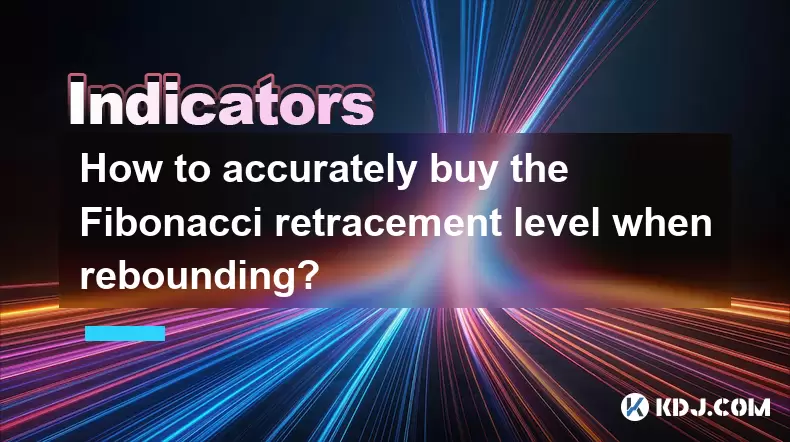
Understanding the Fibonacci Retracement Tool
The Fibonacci retracement is a popular technical analysis tool used by traders to identify potential support and resistance levels. It is based on the idea that markets will retrace a predictable portion of a move before continuing in the original direction. The key Fibonacci levels are typically 23.6%, 38.2%, 50%, 61.8%, and 78.6%. When a cryptocurrency price experiences a significant upward or downward movement, it often pulls back or "retraces" to one of these levels before resuming its trend.
To use this tool effectively, traders must first identify a strong price swing — either from a recent low to high (in an uptrend) or from a high to low (in a downtrend). Drawing the Fibonacci retracement from these points helps visualize where the price might find support or resistance during a pullback. This is especially useful when trying to buy at optimal levels during a rebound.
Identifying the Correct Price Swing for Fibonacci Application
Before drawing Fibonacci levels, it’s crucial to identify the correct price swing highs and lows. In an uptrend, the starting point should be the lowest candlestick before the upward movement began, and the ending point should be the highest candlestick before the pullback started. Conversely, in a downtrend, you start at the highest peak and end at the lowest trough.
Using incorrect swing points can lead to misleading retracement levels and poor trading decisions. Therefore, traders should always zoom out and look at the broader chart structure. Look for clear impulsive moves with minimal overlapping candles. Avoid choppy or sideways price action as it reduces the reliability of Fibonacci levels.
- Ensure the trend is intact and not reversing.
- Confirm that the retracement is part of a larger trend.
- Use multiple timeframes to validate the swing points.
Recognizing Confluence Zones with Fibonacci Levels
Buying at a Fibonacci retracement level becomes more reliable when combined with other technical indicators or price action signals. These confluence zones increase the probability that the price will respect the level and reverse in the direction of the trend.
Some common tools to confirm Fibonacci levels include:
- Trendlines – A Fibonacci level aligning with a previously broken trendline may act as dynamic support or resistance.
- Moving averages – If a key moving average like the 50-period or 200-period EMA coincides with a Fibonacci level, it adds strength to the signal.
- Candlestick patterns – Bullish reversal patterns like the hammer, engulfing, or morning star near a Fibonacci level can provide confirmation for entry.
- Volume spikes – A sudden surge in volume at a Fibonacci level suggests institutional interest and increases the likelihood of a bounce.
By combining these elements, traders can filter out false signals and focus on high-probability setups when looking to buy during a rebound.
Timing Your Entry Near Fibonacci Levels
Once the Fibonacci retracement is correctly drawn and confluence factors are identified, the next step is to time your entry. Simply buying at a Fibonacci level without confirmation can be risky, especially in volatile crypto markets.
Traders often wait for the price to touch or slightly overshoot a Fibonacci level before bouncing. This gives room for the market to test the level and confirm its validity. To avoid entering too early or too late:
- Watch for bullish candlestick formations forming at or near the level.
- Use a limit order just above the Fibonacci level to ensure execution if the price reverses.
- Consider using a stop loss below the next Fibonacci level to manage risk.
It's also important to observe how the price behaves around each level. Some levels may be ignored entirely, while others may cause sharp reversals. Experience and backtesting help in understanding which levels are more reliable in specific market conditions.
Managing Risk and Position Sizing
Even with accurate Fibonacci placement and confluence, no trade is guaranteed. Proper risk management is essential when buying at Fibonacci retracement levels during a rebound.
A general rule is to risk no more than 1-2% of your trading capital per trade. This means adjusting your position size according to the distance between your entry and stop-loss level. For example, if your stop-loss is 5% away from your entry point, your position size should be smaller compared to a trade where the stop-loss is only 2% away.
- Always calculate your reward-to-risk ratio before entering a trade. Aim for at least a 2:1 ratio.
- Place your take-profit target at the previous swing high (in an uptrend) or swing low (in a downtrend).
- Monitor the market closely and consider trailing your stop-loss once the price moves favorably.
These practices help protect your capital and ensure long-term sustainability in cryptocurrency trading.
Frequently Asked Questions (FAQs)
Q: Can Fibonacci retracement be used on all timeframes?
Yes, Fibonacci retracement can be applied to any timeframe, including 1-minute charts and weekly charts. However, higher timeframes like the 4-hour or daily chart tend to offer more reliable levels due to reduced noise and increased institutional participation.
Q: Why does the 50% level matter if it's not a Fibonacci number?
Although the 50% level isn't derived from the Fibonacci sequence, it is widely used by traders because of the psychological significance of halfway retracements. Many traders place orders around this level, making it a self-fulfilling prophecy in certain market conditions.
Q: Should I always trust Fibonacci levels?
No, Fibonacci levels should never be used in isolation. They serve best as a guide rather than a definitive signal. Always combine them with other tools such as volume analysis, candlestick patterns, and trend confirmation to improve accuracy.
Q: How do I know which Fibonacci level the price will bounce from?
There's no guaranteed way to predict exactly which level the price will respect. Traders often watch for signs of reversal such as bullish candlesticks, momentum divergence, or support from moving averages to determine which level is most likely to hold.
Disclaimer:info@kdj.com
The information provided is not trading advice. kdj.com does not assume any responsibility for any investments made based on the information provided in this article. Cryptocurrencies are highly volatile and it is highly recommended that you invest with caution after thorough research!
If you believe that the content used on this website infringes your copyright, please contact us immediately (info@kdj.com) and we will delete it promptly.
- 2025-W Uncirculated American Gold Eagle and Dr. Vera Rubin Quarter Mark New Products
- 2025-06-13 06:25:13
- Ruvi AI (RVU) Leverages Blockchain and Artificial Intelligence to Disrupt Marketing, Entertainment, and Finance
- 2025-06-13 07:05:12
- H100 Group AB Raises 101 Million SEK (Approximately $10.6 Million) to Bolster Bitcoin Reserves
- 2025-06-13 06:25:13
- Galaxy Digital CEO Mike Novogratz Says Bitcoin Will Replace Gold and Go to $1,000,000
- 2025-06-13 06:45:13
- Trust Wallet Token (TWT) Price Drops 5.7% as RWA Integration Plans Ignite Excitement
- 2025-06-13 06:45:13
- Ethereum (ETH) Is in the Second Phase of a Three-Stage Market Cycle
- 2025-06-13 07:25:13
Related knowledge
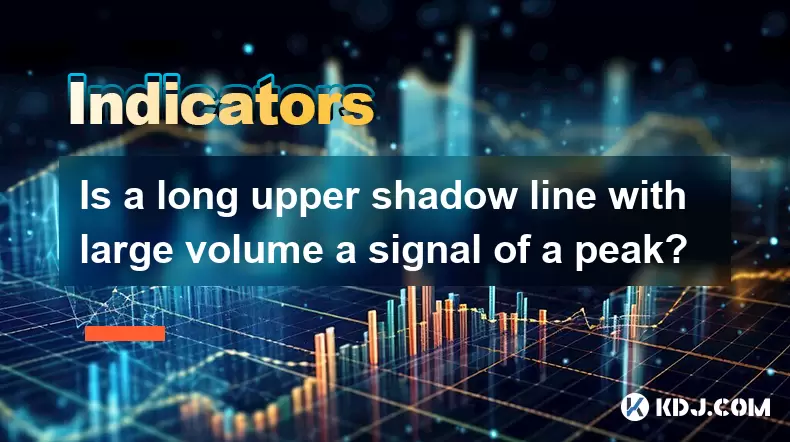
Is a long upper shadow line with large volume a signal of a peak?
Jun 17,2025 at 05:07am
Understanding the Long Upper Shadow LineA long upper shadow line, often referred to as a shooting star or inverted hammer depending on its location in a chart, is a candlestick pattern that indicates potential reversal from an uptrend. This pattern forms when prices rise significantly during the trading period but then fall back to close near the openin...

How to confirm the effectiveness of the average price line support in the time-sharing chart?
Jun 17,2025 at 12:56am
Understanding the Time-Sharing Chart and Its RelevanceIn cryptocurrency trading, time-sharing charts play a crucial role in analyzing short-term price movements. These charts typically display price fluctuations over a specific period, often ranging from minutes to hours. Traders rely on them to make quick decisions based on real-time data. The average ...

What does it mean when the momentum indicator breaks above the zero axis?
Jun 17,2025 at 12:43am
Understanding the Momentum IndicatorThe momentum indicator is a technical analysis tool used to measure the speed or velocity of price movements in cryptocurrency markets. It helps traders identify potential trend reversals, overbought or oversold conditions, and confirms existing trends. The indicator typically oscillates around a zero line, with value...
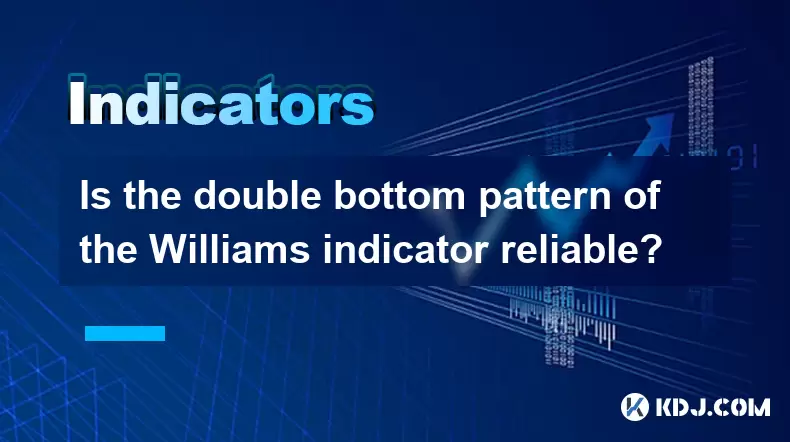
Is the double bottom pattern of the Williams indicator reliable?
Jun 17,2025 at 03:56am
Understanding the Williams Indicator and Its SignificanceThe Williams %R indicator, often referred to as Williams Percent Range, is a momentum oscillator used in technical analysis to identify overbought or oversold conditions in the market. Developed by Larry Williams, this indicator fluctuates between 0 and -100, with readings above -20 indicating ove...
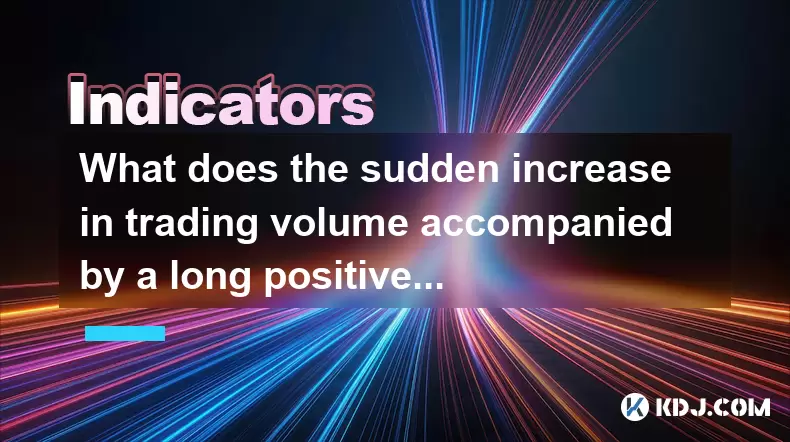
What does the sudden increase in trading volume accompanied by a long positive line mean?
Jun 17,2025 at 06:01am
Understanding the Sudden Surge in Trading VolumeWhen traders observe a sudden increase in trading volume, it typically signals a significant shift in market sentiment. This surge often indicates that more participants are entering or exiting positions, which could be due to news events, macroeconomic data releases, or institutional activity. High tradin...
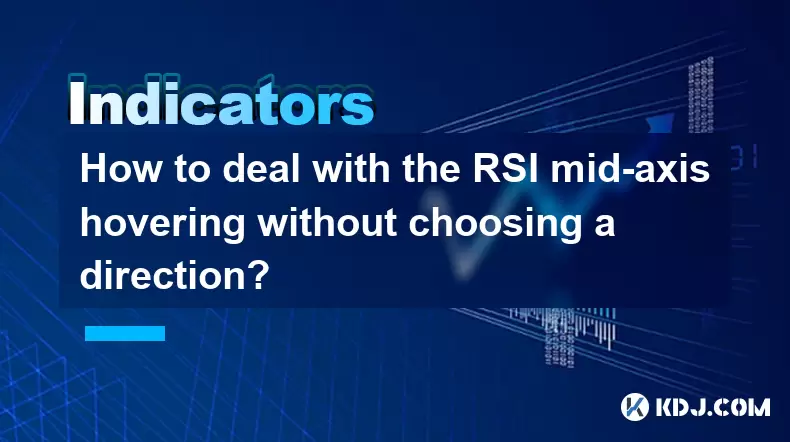
How to deal with the RSI mid-axis hovering without choosing a direction?
Jun 17,2025 at 02:02am
Understanding RSI Mid-Axis Hovering in Cryptocurrency TradingThe Relative Strength Index (RSI) is a popular momentum oscillator used by traders to assess whether an asset is overbought or oversold. In cryptocurrency markets, it's common for the RSI to hover around its mid-axis, typically at the 50 level, without showing a clear upward or downward trend....

Is a long upper shadow line with large volume a signal of a peak?
Jun 17,2025 at 05:07am
Understanding the Long Upper Shadow LineA long upper shadow line, often referred to as a shooting star or inverted hammer depending on its location in a chart, is a candlestick pattern that indicates potential reversal from an uptrend. This pattern forms when prices rise significantly during the trading period but then fall back to close near the openin...

How to confirm the effectiveness of the average price line support in the time-sharing chart?
Jun 17,2025 at 12:56am
Understanding the Time-Sharing Chart and Its RelevanceIn cryptocurrency trading, time-sharing charts play a crucial role in analyzing short-term price movements. These charts typically display price fluctuations over a specific period, often ranging from minutes to hours. Traders rely on them to make quick decisions based on real-time data. The average ...

What does it mean when the momentum indicator breaks above the zero axis?
Jun 17,2025 at 12:43am
Understanding the Momentum IndicatorThe momentum indicator is a technical analysis tool used to measure the speed or velocity of price movements in cryptocurrency markets. It helps traders identify potential trend reversals, overbought or oversold conditions, and confirms existing trends. The indicator typically oscillates around a zero line, with value...

Is the double bottom pattern of the Williams indicator reliable?
Jun 17,2025 at 03:56am
Understanding the Williams Indicator and Its SignificanceThe Williams %R indicator, often referred to as Williams Percent Range, is a momentum oscillator used in technical analysis to identify overbought or oversold conditions in the market. Developed by Larry Williams, this indicator fluctuates between 0 and -100, with readings above -20 indicating ove...

What does the sudden increase in trading volume accompanied by a long positive line mean?
Jun 17,2025 at 06:01am
Understanding the Sudden Surge in Trading VolumeWhen traders observe a sudden increase in trading volume, it typically signals a significant shift in market sentiment. This surge often indicates that more participants are entering or exiting positions, which could be due to news events, macroeconomic data releases, or institutional activity. High tradin...

How to deal with the RSI mid-axis hovering without choosing a direction?
Jun 17,2025 at 02:02am
Understanding RSI Mid-Axis Hovering in Cryptocurrency TradingThe Relative Strength Index (RSI) is a popular momentum oscillator used by traders to assess whether an asset is overbought or oversold. In cryptocurrency markets, it's common for the RSI to hover around its mid-axis, typically at the 50 level, without showing a clear upward or downward trend....
See all articles

























































































